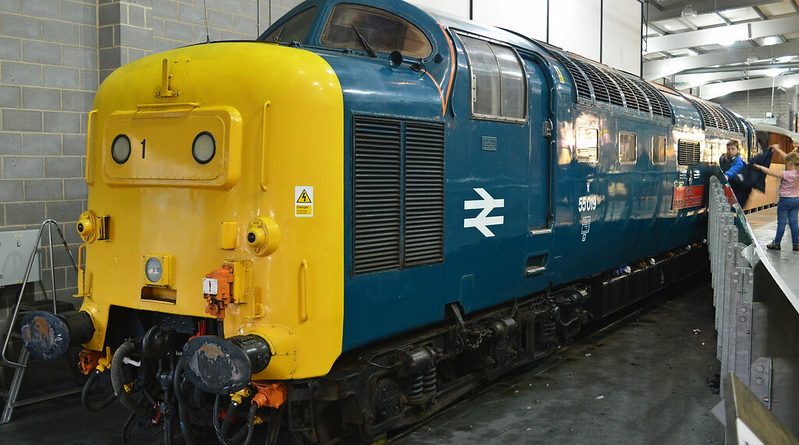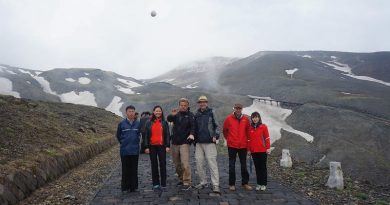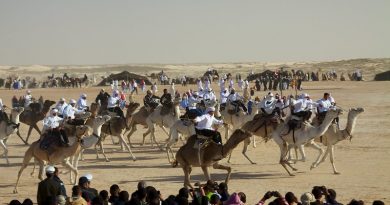Journey Guide: Vietnam’s Unification Express
Established under French Colonial rule at the turn of the twentieth century, and completed nearly forty years later in 1936, Vietnam’s North-South Railway (commonly nicknamed the Reunification Express following the end of the Vietnam War) has been plagued by poor infrastructure over the entirety of its lifetime. Indeed, over the 20th century, the railway has found itself in the heart of many international conflicts, sustaining major damage in the process.
The north-south railway, or Reunification Express, is a single-track metre gauge line connecting the capital Hanoi in the north to Ho Chi Minh City in the south, for a total length of 1,726 km. The line was established during French colonial rule, and was completed over a period of nearly forty years, from 1899 to 1936. As of 2005, there were 278 stations on the Vietnamese railway network, of which 191 were located along the North–South line.
From World War II through to the Vietnam War, the entire North–South Railway sustained major damage from bombings and sabotage. Owing to this damage, and to a subsequent lack of capital investment and maintenance, much of the infrastructure along the North–South Railway remains outdated or in poor condition; in turn, lack of infrastructure development has been found to be a root cause for railway accidents along the line, including collisions at level crossings and derailments.
Today it crosses roads, zips through slums and is poorly maintained. Infrastructure and safety continue to pose problems, especially on the older TN trains. While the number of accidents fluctuates from year to year, since 2008 fatalities have increased from 190 to 263, a clear indicator that the North-South Railway is in urgent need of modernization.
As of 2007, 85% of the network’s passenger traffic and 60% of its cargo traffic was transported along the North–South line. There are over 100 stops on this line before reaching the final stop of Ho Chi Minh City and around 20 different trains – ranging from express trains to the single track local ones that travel at a maximum speed of 15km/hr.
The journey begins in Vietnam’s capital and second largest city. For nearly a thousand years, Hanoi was Vietnam’s political hub, until Hue rose to prominence during the Nguyen Dynasty.Hanoi was the capital of French Indochina during the country’s time as a colony, as well as the capital of the Communist North Vietnam before the country’s reunification with the South. During the first Indochina war the Viet Minh continued to sabotage the railway due to its frequent use by the French, resulting in major damage of various bridges.
The city is one of Vietnam’s cultural hotspots, home to many religious sites and museums, which emphasize Vietnam’s war-torn history. Among these are the Hanoi Hilton-a former POW camp, the Vietnam Museum of Revolution and the controversial Ho Chi Minh Museum.
THROUGH: THANH HO (3.5hrs)
A stronghold of the Viet Cong during the Second World War and the Vietnam War, the Thanh Hoa Bridge was a vital link between different regions of North Vietnam, and when the war started, became a strategic passage for supplies and reinforcements sent to the Viet Cong fighting in South Vietnam, transporting both road and rail traffic.
In World War II Japanese forces used the railway extensively during their occupation of the area, which encouraged American forces as well as Vietnamese guerilla groups to sabotage the train, leading to major damage. Despite this, reconstruction efforts were undertaken.
The most damage however, was sustained during the Vietnam War throughout the 1960’s and 1970’s. Both North and South Vietnamese forces targeted the railway. The US military would also frequently target key sites along the railway such as the Thanh Hoa Bridge, also known as the Dragons Jaw, leaving a wave of destruction in its wake.
Due to strategic bombing by the US military to disrupt the Viet Cong’s use of the rail network, the bridge was completely destroyed, thereby hindering the railway’s use as a distribution and travel network for Communist forces.
THROUGH: HUE
For over 100 years, Hue was Vietnam’s imperial capital-home to the Nguyen Dynasty. The city is world-renown for its historic monuments, most notable of which is the Citadel, which was home to the emperors of the Nguyen Dynasty. The city is also home to the tombs of several emperors, including the isolationist Minh Mang as well as Vietnam’s tallest Pagoda. Furthermore, the city is in close proximity to the Demilitarized Zone, where various settings from the Vietnam War are on display.
Hue Railway Station is considered to be among the most beautiful in the country, heavily influenced by French architecture due to its construction during the French Indochina period.
THROUGH: DA NANG
Home to one of Vietnam’s five largest train stations, surpassed by Saigon and Hanoi stations, Da Nang is the commercial and educational centre of Central Vietnam, with a sheltered, easily accessible port. The city is one of Vietnam’s most naturally beautiful, with the unusual Marble Mountains, a cluster of five marble and limestone hills scattered around the city, reflecting this.
THROUGH: PHAN RANG-THAP CHAM
A major location during the Vietnam War, the city was home to the USAF’s Phan Rang Air Base, which is currently used by the Vietnamese military following its seizure at the end of the Vietnam War in 1975. Due to its significance during the conflict, a number of war memorials and places of interest exist here.
The railway station has a distinct architectural design, combining an art deco style with more traditional Vietnamese designs. Following the Vietnam War, this part of the railway was in utter ruins, neglected to such an extent that people would squat in the train station. Despite this, as part of the railway’s rehabilitation in recent years, much of the damage has been undone.
Early in the conflict, the Viet Minh’s sabotage attempts failed to seriously damage the French railways, and most trains circulated without much protection. Beginning in 1947, however, the Viet Minh began to use mines, with circulation slowing to a crawl as they became more and more powerful. In response, the French began using the armed armored trains La Rafale as both a cargo-carrier and a mobile surveillance unit. In February 1951 the first Rafale was in service on the Saigon-Nha Trang section of the North–South line.
END LOCATION: HO CHI MINH CITY (SAIGON)
Vietnam’s largest city and the former capital of South Vietnam, Ho Chi Minh City is the final destination on the Reunification Express. The city is one of Vietnam’s touristic hotspots and home to a number of museums as well as the Chu Chi Tunnels-an underground network of tunnels used by the Viet Cong during the Vietnam War.
After the Fall of Saigon on 30 April 1975, the Communist government of the newly unified Vietnam took control of the former South Vietnamese railway. The heavily damaged, war-torn North–South line was restored and returned to service on 31 December 1976, promoted as a symbol of Vietnamese unity. In the short time between the surrender of the South and the reopening of the line, 1334 bridges, 27 tunnels, 158 stations and 1370 switches had been repaired. Other railway lines that once existed, such as the Da Lat-Thap Cham line were dismantled during this period to provide materials for the repair of the main line.
Although the North-South Railway has been running in some form or another since 1936, it was only termed the Reunification Express following the Vietnam War, due to the divisions between North and South Vietnam. Once the Communists were victorious in the country, the two nations reunified, with the express being nicknamed due to it starting in Hanoi, the hub of Communist North Vietnam and ending in Saigon (now Ho Chi Minh City), the stronghold of the Capitalist South Vietnam.
Reunification Day, held ever year on April 30th, is at its most jubilant in Ho Chi Minh City, due to the day marking when the North Vietnamese troops seized control of Saigon, thus leading to the two nations’ reconciliation. There are flags, neon lights and colorful banners all over the city while lines of parades line up the main streets, with many people participating. If one wishes to participate however, they must get there as early as possible.
NOTES & LOGISTICS
LOGISTICS:
Time: 40 Hours
Cost: $61-$93(USD)
Schedule: Several trains leave from Hanoi bound for Ho Chi Minh City.
The longer, more intense journeys are likely the local types such as the TN1.
LESSER KNOWN RAIL ROUTES:
Hanoi to Hai Phong: a large port city southwest of Ha Long Bay.
Hanoi to Quan Trieu: in Thai Nguyen province, due north of Hanoi.
Kep to Ha Long: Kep is northwest of Hanoi on the line to Dong Dang. This spur does run to Ha Long, but the train stops well short of anywhere particularly useful — making this just about the slowest possible way on earth to get from Hanoi to Ha Long Bay short of walking.
Kep to Luu Xa
NOTES:
Can interchange between passenger & freight trains where fits in with editorial.
USEFUL WEBSITES:
https://vietnam-railway.com
http://www.york.ac.uk/inst/irs/irshome/features/features.htm
http://www.railwaysinvietnam.com/military.html
http://www.travelfish.org/feature/117
http://www.travelfish.org/resources/vietnam-railways.pdf
http://www.vr.com.vn/trang-chu.html
CLIMATE
Vietnam is an all-year destination with a diverse climate depending on where you are.
Hanoi: hot & humid in summer (April/ May – October); cool & dry in winter (November – March)
Halong Bay: autumn and spring are the best times for clear skies to experience the magnificent scenery of limestone karsts and the tropical waters.
Hue: best time to travel is January to August, though it can get really hot in the summer.
Ho Chi Minh City: weather is good all year around, though there might be small downpours from May to November.
GETTING AROUND
It’s very easy to get around Vietnam using buses for long journeys and taxis in the cities. However, if you’re feeling adventurous, scooters are the most popular way to get around Vietnam.
Travelling through Vietnam by train is a great way to interact with the local population. There are several different classes of train – from the more luxurious to the very basic. Costs vary accordingly.
Walking around the cities – especially Hanoi – the most important thing to remember is that once you decide to cross a road, stick to your decision. You’ll find people anticipate your movements and drive accordingly. Accidents are more likely to happen if you hesitate or change your mind half way through.
PRACTICAL INFO
- Currency: Vietnamese Dong (VND)
- Language: Vietnamese is the main language, though some of the older generation may also speak French or English.
- Don’t forget: Mosquito Repellent (and anti malarials if you are going into malarial areas) and Phrase book – a few words in Vietnamese go a long way
- Eat: Pho: consisting of a salty broth, fresh rice noodles, a sprinkling of herbs and chicken or beef, features predominately in the local diet. It’s cheap, tasty, and widely available at all hours. Easily found by looking for plastic chairs that seem to be a more appropriate size for children than adults. Half hatched egg: a delicacy in Vietnam, these eggs are only for the adventurous. They are fertilized duck eggs and eating them you get the experience of eating the developed duck foetus, wings, bones, feathers and beak. Bia Hoi: You’ll see signs for this throughout the cities. It’s a locally brewed, low alcohol content beer and often accompanies the make shift Pho stands.
- Shop: Traditional silk: From silk scarves to silk sleeping bag liners, this material is highly sought after by tourists and products are readily available. Lacquer-ware: Like in other Asian countries, these products are beautifully crafted and can be found in more souvenir shops. T-Shirts: One of the most popular buys with travellers; t-shirts come in an array of logos, from Ho Chi Minh to the Vietnam War and even the local noodle dish, Pho. Art work: Lovers of Tin Tin’s adventures in the 80s will find plenty of paraphernalia to buy. But even if you’re not, there are plenty of other art work to browse through.




